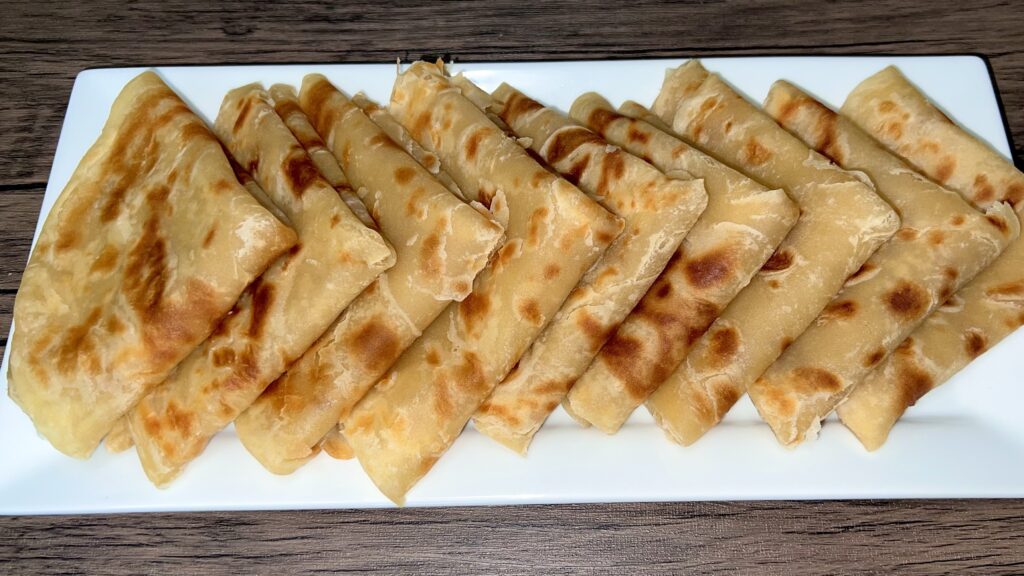This post may contain affiliate links, which means I may receive a commission from purchases made through the links.
Chapati is a scrumptious and versatile dish that is extremely popular in many parts of the world. It is one of those few foods that you can have for breakfast, lunch, or dinner, and it also makes for a great snack. If you’re unfamiliar with chapati, think of it as another version of Naan bread or a thicker and tastier tortilla. With that said, making soft and delicious chapati is often a challenge to many. A missed step here or a poorly measured ingredient there and the chapati comes out dry, chewy, or simply “not-so-good-looking.” This tried and tested recipe will have you craving chapati every day.
Print The Recipe
Serving Suggestions
Chapati is a flatbread that can be served with many dishes and in a variety of ways.
- For delicious vegetarian options with tons of plant proteins, try chapati with my creamy lentil stew or green grams stew (pictured below).
- Roll or fold it up and enjoy it with this beef ribs stew or this chicken in coconut milk stew.
- Use it as a taco shell and fill it with baked pork chunks and vegetables of your choice.
- Use it as a burrito wrap for rice, sautéed cabbage, cheese, and meat e.g., fajitas.
- Enjoy plain chapati with hot tea, coffee, or a cold beverage.
- Make this Ugandan Rolex which is chapati layered with eggs. Enjoy your Rolex with a drink.
Additional Cooking Tips for Soft Chapati
You might want to:
- Regulate your stove heat between medium and medium-high if necessary. Be careful not to burn the chapatis or to dry them out with too low heat.
- If your chapati starts rising and swelling while cooking, that’s a good sign. Smile. If that rising messes with how it cooks (uneven cooking), pierce it to release the air and make it flat.
- Be keen when measuring water, flour, and oil. although not required, you can sieve your flour before measuring it. Alternatively, loosen it up with a spoon so it is not too packed when you measure it.
- When rolling out your chapatis to cook, use flour minimally on the working surface. Just enough to prevent sticking. Too much flour and your chapatis will go into the pan dusty, and that dry flour will burn and make your chapati look… not so good.
- Well-made chapatis will fold effortlessly while warm and should be soft, not chewy. They can come out a little flaky at first but as you pile them up one after another, their moisture softens them. So, make sure to pile them up when cooking for a soft chapati end result.
Tips on Preserving Your Chapati
- Preserve chapati moisture by covering any remaining ones in an airtight container as soon as they cool down (I like to use large Ziplocs for this). Chapati, like many other pastries, dries out quickly if left uncovered.
- Preserve chapati freshness by freezing any leftovers. Refrigerating doesn’t work as well.
- You can heat up frozen chapati on the stovetop or in the microwave. If microwaving, do about 20 seconds at a time and turn it over. You will hardly need to go over a minute and a half or your chapati will dry out.

